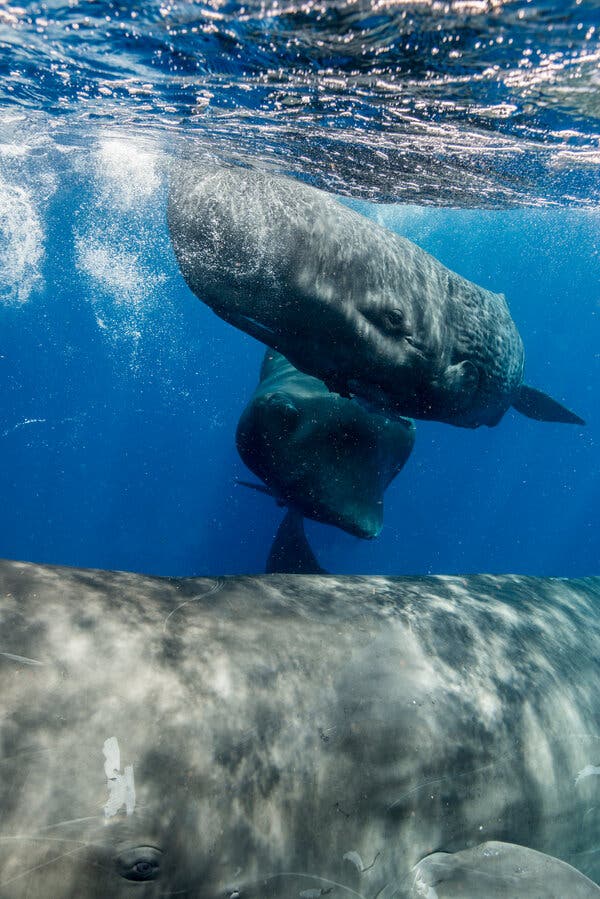Ever since the discovery of whale songs almost 60 years ago, scientists have been trying to decipher their lyrics. Are the animals producing complex messages akin to human language? Or sharing simpler pieces of information, like dancing bees do? Or are they communicating something else we don’t yet understand?
In 2020, a team of marine biologists and computer scientists joined forces to analyze the click-clacking songs of sperm whales, the gray, block-shaped leviathans that swim in most of the world’s oceans. On Tuesday, the scientists reported that the whales use a much richer set of sounds than previously known, which they called a “sperm whale phonetic alphabet.”
People have a pho-ne-tic alphabet too, which we use to produce a practically infinite supply of words. But Shane Gero, a marine biologist at Carleton University in Ottawa and an author of the study, said it’s unclear whether sperm whales similarly turn their phonetic sounds into a language.
“The fundamental similarities that we do find are really fascinating,” Dr. Gero said. “It’s totally changed the way we have to do work going forward.”
Since 2005, Dr. Gero and his colleagues have followed a clan of 400 sperm whales around Dominica, an island nation in the eastern Caribbean, eavesdropping on the whales with underwater microphones and tagging some of the animals with sensors.
